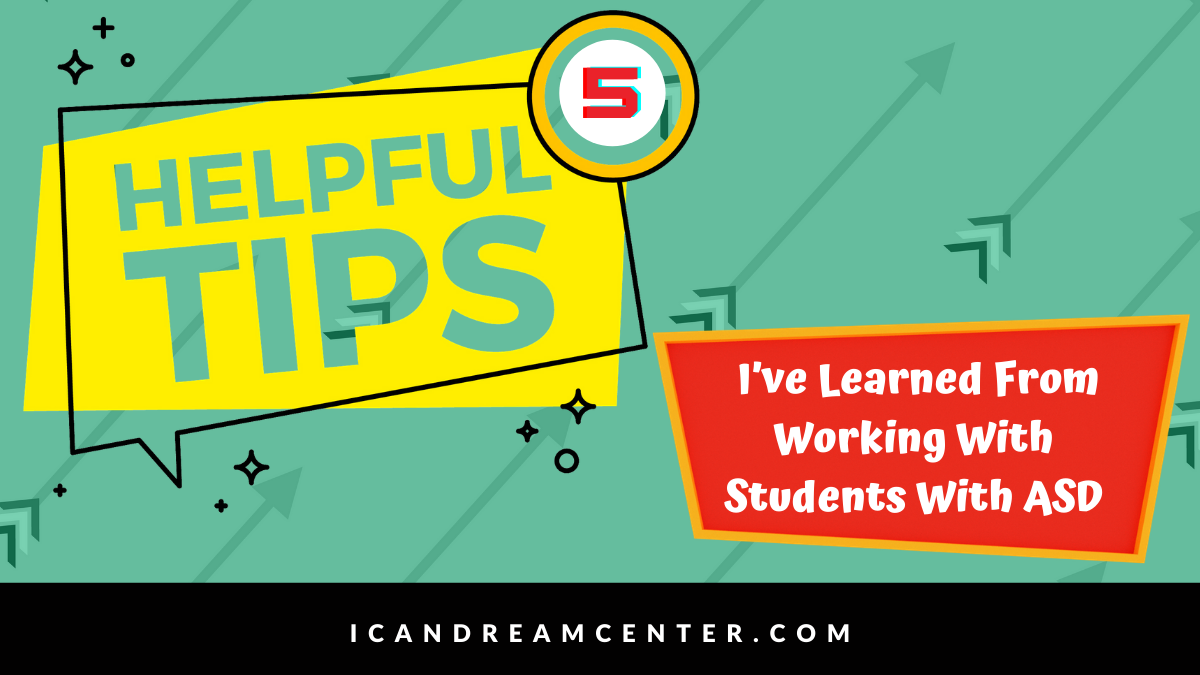
5 Tips I’ve Learned From Working With Students With ASD
As my first full academic school year of interning at the iCan Dream Center for my Masters program comes to an end, I often find myself reflecting on everything that I have learned. This year has been a deep dive into autism- what it is, what it looks like (or does not look like), and how it impacts one’s learning ability. Here are 5 tips for someone working with a child or young adult with Autism Spectrum Disorder.
1. Roleplay. I have noticed that students enjoy roleplay activities. Roleplaying helps in understanding real life/social situations. By acting out certain situations, students have more knowledge on how to respond to similar situations in the “real world.”
2. Focus on improvements/the positives. As a teacher (or even a parent/guardian) it can be super frustrating when something is not working. However, there is always something worthy of praise, whether it is a small behavior improvement or learning a new word. It is important to focus on improvements, big or small, to help us stay motivated and positive.
3. Take advice from teachers. This one goes out to members that share a household with someone with Autism Spectrum Disorder. Take/ask for advice from the teachers that work with your child. We are working hard to improve problematic behaviors. Often, this comes with steps, reinforcements, or specific dialogue. This will only be effective if it is practiced in ALL environments (home and school).
4. Accept trial and error. Similar to tip #2, we know how frustrating “failure” can be. However, mistakes or lack of mastery should not be seen as failure. Rather, it is knowledge on what does not work. So be prepared to go through a trial and error system. This is OK! I would bet that almost everyone goes through some sort of trial and error when working with someone with Autism Spectrum Disorder. The explanation is simply that: what works for some people, does not work for all. Your efforts are much appreciated (even if they do not work!), and you’re doing great.
5. Less is more. As someone who talks a lot, this was a huge learning point for me. To someone with ASD, too much direction/words can cause too much stimulation which results in confusion or anxious behaviors. Gestures and expressions often work much better than whole phrases. Even one-word instructions prove better results than whole phrases. For example, instead of saying “Go sit in your seat please” over and over until the request is complete, sometimes the word “sit” while pointing to their chair is understood much easier. Keep instructions as simple as possible!
Bonus:6. We are all human!!!! If anything, remember that autism is not a disability it is a different ability.
